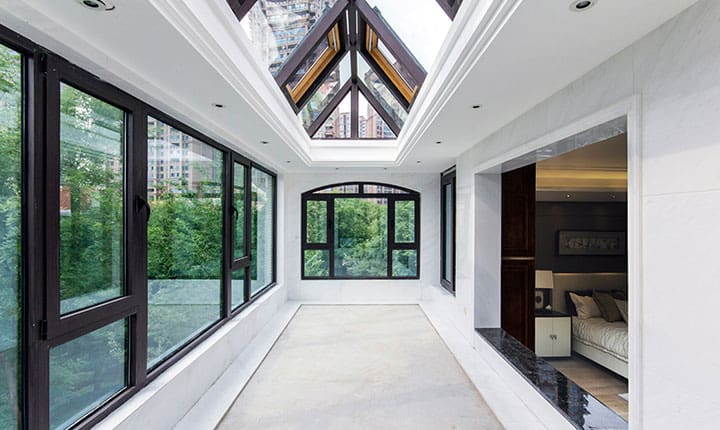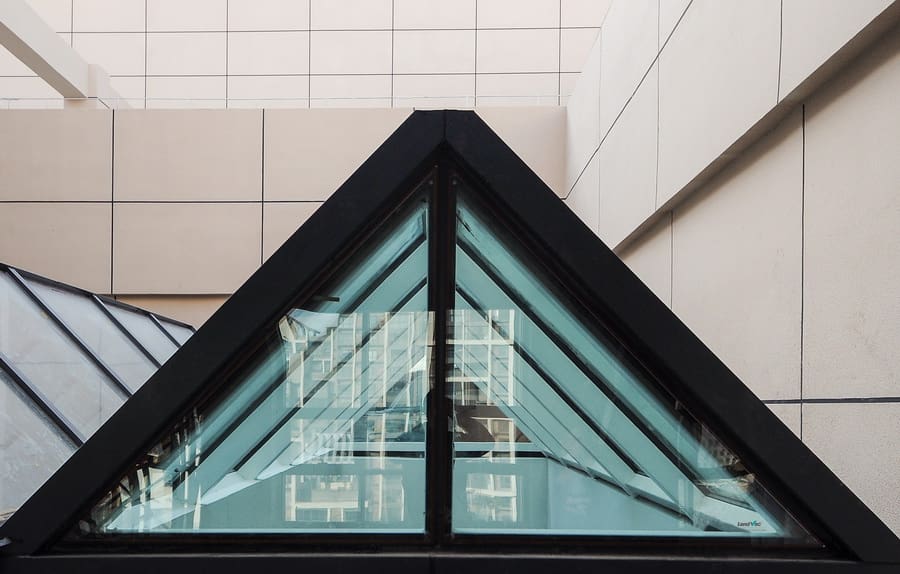
Why LandVac Vacuum Glazing is Perfect for Skylights and Roof Lanterns
Skylights and roof lanterns are one of the most sought-after home features. They flood rooms with daylight, make spaces feel […]
Skylights and roof lanterns are one of the most sought-after home features. They flood rooms with daylight, make spaces feel bigger, and create striking architectural detail. But while they look beautiful, they can also be a source of frustration, turning rooms into ovens in summer, leaking heat in winter, and amplifying noise from rain or traffic.
The right glazing makes all the difference. And that’s exactly where LandVac vacuum glazing comes in.
What are the benefits of skylights and roof lanterns?
Homeowners and architects choose them to bring natural light into a space, connect indoors with the outdoors, and add character. A well-designed roof lantern can transform a kitchen, living space, or extension into the heart of the home.
But the reality is that without high-performance glass, skylights can cause as many problems as they solve.
What makes a skylight perform well?
A great skylight should make a room comfortable, quiet, and efficient to run. Poorly performing glazing does the opposite:
- It overheats in direct sun.
- It leaks warmth on cold nights.
- It condenses on the inside.
- It magnifies outside noise.
The goal is daylight and openness without sacrificing comfort, energy bills, or peace and quiet.

How does LandVac compare to double and triple glazing?
Double glazing: Uses insulating gases such as argon, but these settle and lose effectiveness when installed on a slope. That means skylights quickly underperform, leaving rooms too hot in summer and too cold in winter.
Triple glazing: Offers better efficiency but faces the same issue with gas stratification. On top of that, it is heavy and bulky, which makes it difficult to use in roof structures where slim profiles and reduced weight are essential.
LandVac vacuum glazing: Does not rely on gas at all, so it retains full thermal performance even on an angle. With U-values as low as 0.34 W/m²K and up to 41 dB noise reduction, it outperforms triple glazing while staying slimmer and lighter. That combination makes it ideal for skylights and roof lanterns, where stability and comfort matter most.
In gas-filled double and triple glazing, insulating gases like argon or krypton can settle unevenly when the glass is tilted. This reduces their insulating power, especially in skylights and roof lanterns where the glass sits at an angle. The result is heat loss in winter, overheating in summer, and overall poorer performance.
LandVac vacuum glazing avoids this problem entirely because it uses a vacuum cavity, so performance remains stable on any angle.
How does LandVac improve energy efficiency?
LandVac delivers U-values as low as 0.34 W/m²K in just 8.3 mm of glass. That means it performs better than bulky triple glazing without adding unnecessary weight to overhead structures.
For homeowners, the benefit is simple: a bright space that stays warm in winter and cool in summer, with lower energy bills over the life of the property.
How does LandVac reduce overheating in summer?
Skylights are notorious for making rooms too hot. LandVac can be paired with solar-control coatings that cut unwanted solar radiation while still letting natural light pour in.
The result is a bright, airy room that never feels stifling, even on the sunniest days.
How effective is LandVac at noise reduction?
Nobody wants their skylight to double as a drum. LandVac reduces external noise by up to 41 dB, creating calm even under heavy rain, flight paths, or busy roads. That makes a huge difference to kitchens, living spaces, or loft conversions directly under the roof.
Is LandVac safe and durable for overhead glazing?
Every LandVac unit is toughened as standard, so it is far stronger than conventional glazing. For overhead installations, this is critical, protecting both the home and its occupants.
And with a 25-year warranty, homeowners avoid costly mid-life replacements. Skylights are notoriously disruptive and expensive to swap out. With LandVac, you can be confident your overhead glazing will perform for decades without the usual worries.
Why is LandVac perfect for skylights and roof lanterns?
LandVac vacuum glazing solves all these issues in one slim unit.
- No loss of performance on an angle: Because it uses a vacuum rather than insulating gases, thermal efficiency remains consistent whether vertical or tilted. This makes it uniquely suited for skylights and roof lanterns.
- Superior thermal insulation: With U-values as low as 0.34 W/m²K, it outperforms both double and triple glazing.
- Noise reduction: Up to 41 dB sound insulation reduces traffic noise, rain impact, and other distractions from above.
- Slim and lightweight: Just 8.3 mm thick, it delivers better results than bulky triple glazing without overloading roof structures.
- Solar protection options: LandVac can be paired with solar control coatings or tints to limit radiation, preventing rooms from overheating in summer while keeping heat in during winter.
- Safety as standard: Each unit is toughened for strength, making it safe for overhead use.
- Long-term reliability: With a 25-year warranty, homeowners and specifiers can be confident of decades of stable performance.
With LandVac, skylights and roof lanterns can be beautiful focal points that also deliver comfort, efficiency, and peace of mind.
Want to explore using LandVac in your next project? Contact our team to talk through your specification.